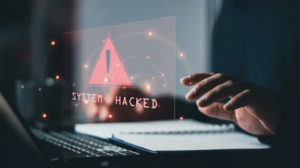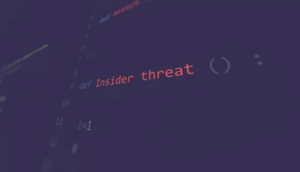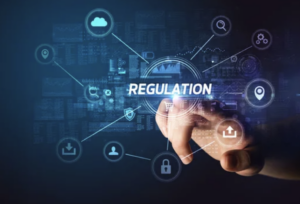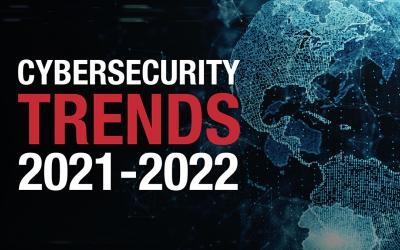As technology continues to advance at an unprecedented pace, so to do the cybersecurity challenges that organizations face. In 2023, the cybersecurity landscape is expected to become even more complex, with an increasing number of attacks and a growing need for sophisticated defense mechanisms. Here are some of the key cybersecurity challenges that organizations are likely to face in 2023:
 Advanced Persistent Threats (APTs)
Advanced Persistent Threats (APTs)
APTs are a type of targeted cyber attack that are designed to infiltrate an organization’s network and remain undetected for an extended period of time. These attacks are often carried out by state-sponsored hackers or other advanced threat actors, and they can be extremely difficult to detect and prevent. In 2023, we can expect to see APTs become even more sophisticated, with attackers using advanced techniques such as machine learning and artificial intelligence to evade detection. This will require organizations to invest in more sophisticated threat detection and response mechanisms to protect their networks.
 Artificial Intelligence and Machine Learning-Based Attacks
Artificial Intelligence and Machine Learning-Based Attacks
AI and ML are already being used by cyber criminals to launch more sophisticated and targeted attacks. In 2023, this trend is expected to continue, with hackers using AI and ML to carry out more advanced attacks that are designed to evade detection and compromise organizations’ networks. These attacks may include targeted phishing campaigns, social engineering attacks, and even attacks on critical infrastructure. As a result, organizations will need to invest in AI and ML-based security solutions to stay ahead of attackers.
 Internet of Things (IoT) Security
Internet of Things (IoT) Security
The IoT is rapidly expanding, with billions of devices connected to the internet. However, the security of these devices is often overlooked, making them vulnerable to cyber attacks. In 2023, we can expect to see more attacks targeting IoT devices, as attackers look for ways to compromise them and gain access to organizations’ networks. This will require organizations to invest in stronger IoT security measures, such as device authentication, network segmentation, and endpoint security.
 Cloud Security
Cloud Security
Cloud computing has become increasingly popular in recent years, with more organizations moving their operations to the cloud. However, the security of cloud environments remains a major concern, with a growing number of attacks targeting cloud infrastructure and data. In 2023, we can expect to see more organizations investing in cloud security solutions to protect their data and applications from cyber threats. This may include implementing stronger access controls, encrypting data in transit and at rest, and deploying advanced threat detection and response mechanisms.
 Ransomware
Ransomware
Ransomware attacks have become increasingly common in recent years, with attackers using this type of malware to encrypt organizations’ data and demand a ransom in exchange for the decryption key. In 2023, we can expect to see more targeted ransomware attacks, where attackers will seek out vulnerable organizations and demand larger ransoms. This will require organizations to invest in stronger backup and recovery mechanisms, as well as advanced threat detection and response solutions to prevent ransomware attacks from spreading across their networks.
 Insider Threats
Insider Threats
Insider threats are a major security risk for organizations, as employees can accidentally or intentionally leak sensitive data or introduce malware into an organization’s network. In 2023, we can expect to see more organizations investing in insider threat detection and prevention technologies to mitigate these risks. This may include deploying user behavior analytics solutions, implementing stronger access controls, and providing employee training on cybersecurity best practices.
 Compliance with Regulations
Compliance with Regulations
The number of cybersecurity regulations and laws is increasing, and in 2023, organizations will need to comply with a growing number of requirements. This includes regulations such as GDPR, CCPA, and HIPAA, as well as other data protection laws. Compliance with these regulations can be challenging, and organizations will need to invest in the right security measures and personnel to ensure that they are meeting their obligations. This may include implementing stronger data encryption and access controls, as well as conducting regular security audits to ensure compliance.
 Supply Chain Security
Supply Chain Security
In 2023, we can expect to see an increased focus on supply chain security, as cyber criminals look for ways to infiltrate organizations through their supply chain partners. This may include targeting third-party vendors, suppliers, or contractors who have access to an organization’s network. To mitigate these risks, organizations will need to invest in stronger supply chain security measures, such as vendor risk management programs, contractually binding security requirements, and regular security assessments of third-party partners.
 Cybersecurity Skills Gap
Cybersecurity Skills Gap
The cybersecurity skills gap is a growing challenge for organizations, with a shortage of qualified cybersecurity professionals making it difficult to defend against the increasing number of cyber threats. In 2023, we can expect to see the demand for cybersecurity professionals continue to outstrip supply, with organizations struggling to find and retain skilled personnel. To address this challenge, organizations will need to invest in cybersecurity training programs, mentorship opportunities, and other initiatives to develop the next generation of cybersecurity professionals.

Privacy and Data Protection
Privacy and data protection will continue to be a major concern for organizations in 2023. With more data being collected and shared than ever before, organizations will need to invest in stronger data protection mechanisms, such as data encryption, access controls, and regular security assessments. They will also need to comply with privacy regulations, such as GDPR and CCPA, which require organizations to obtain explicit consent from individuals before collecting their data and provide individuals with the right to access and delete their personal data.
In conclusion, the cybersecurity challenges that organizations will face in 2023 are diverse and complex, with cyber threats continuing to evolve at an unprecedented pace. Organizations will need to invest in advanced security technologies, such as AI and ML, to stay ahead of attackers. They will also need to secure their IoT devices, cloud infrastructure, and protect against the growing threat of ransomware. With new regulations and compliance requirements, organizations will need to ensure that they are meeting their obligations and taking the necessary steps to protect their data and networks. By staying vigilant and investing in the right security measures, organizations can mitigate these risks and protect themselves against the threats of 2023 and beyond.





0 Comments